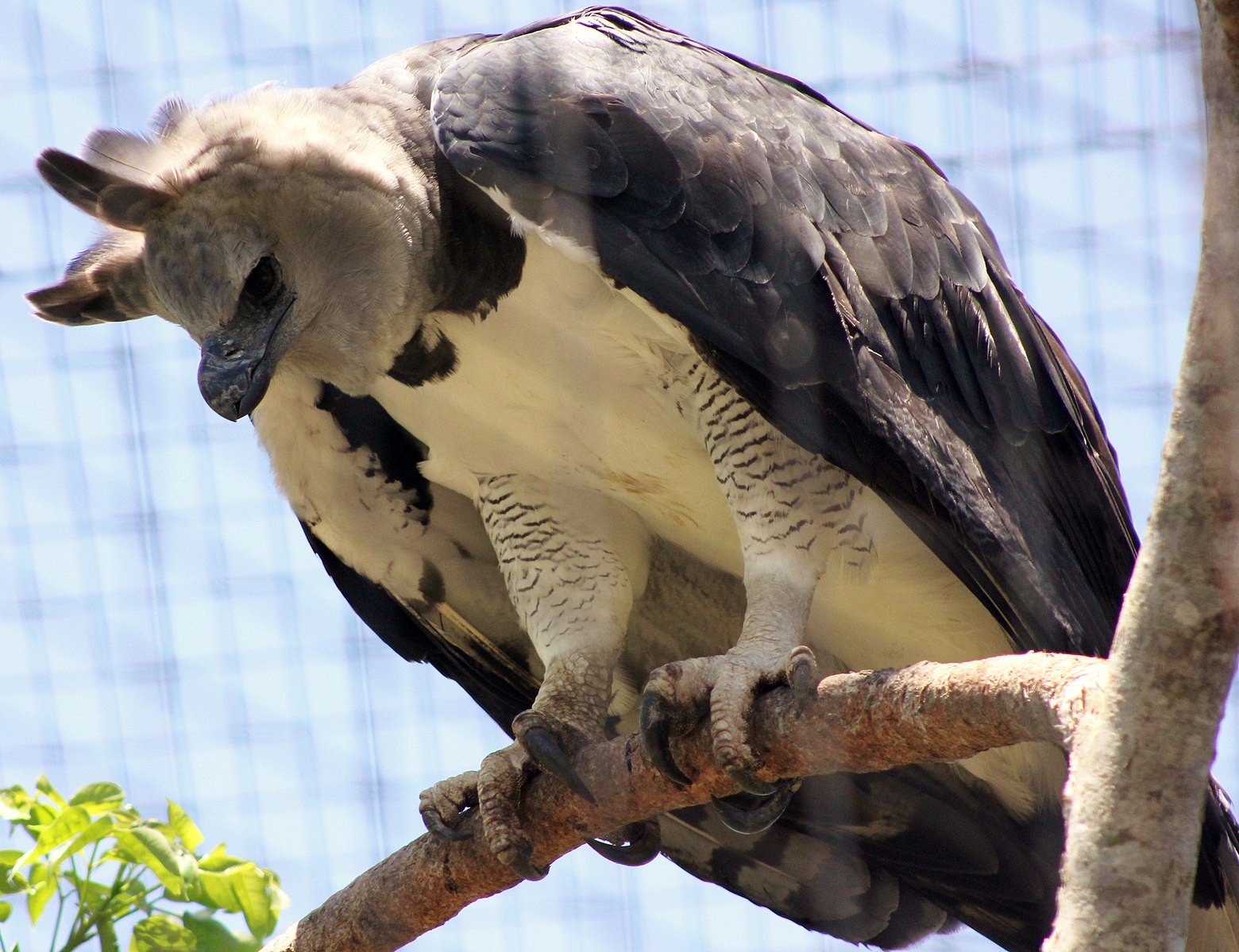Harpy eagles, one of the largest and most powerful birds of prey, communicate through a combination of vocalizations and visual displays. These majestic birds use a variety of sounds, including wailing, croaking, whistling, clicking, and mewing, to convey different messages. Additionally, they employ visual cues, such as raising their crown of long black feathers, to express their territorial and mating behaviors.
Vocalizations: The Language of Harpy Eagles
Harpy eagles are known for their relative silence, as they do not vocalize frequently. However, when they do, their vocalizations serve various purposes, such as:
- Territorial Behavior: Harpy eagles use wailing (wheeeeeee, wheeeeooooo) and croaking sounds to mark their territory and ward off potential intruders.
- Mate Bonding: Pairs of harpy eagles will often rub their bills together, which is believed to be part of their courtship and mate-bonding rituals.
- Communication with Offspring: Harpy eagle parents may use whistling, clicking, and mewing sounds to communicate with their young, particularly during the nesting and fledgling stages.
Visual Displays: Commanding Attention
 Image source: Harpy Eagle by cuatrok77
Image source: Harpy Eagle by cuatrok77
In addition to their vocalizations, harpy eagles rely on visual displays to communicate. These majestic birds have a keen sense of sight, which they use to locate their arboreal prey in the dense rainforest canopy. Their visual communication includes:
- Threat Display: When threatened, harpy eagles will raise their crown of long black feathers, which some believe may help direct sound to their ears, enhancing their ability to detect and respond to potential threats.
- Courtship and Mating: Harpy eagle pairs may engage in aerial displays, such as soaring and diving, as part of their courtship and mating rituals.
Physical Adaptations: Enhancing Communication and Survival
Harpy eagles possess several physical adaptations that not only aid in their hunting and survival but also contribute to their communication abilities:
- Powerful Talons and Legs: Harpy eagles have 5-inch long talons and powerful legs that enable them to subdue their prey, including sloths and primates, which are their primary food sources.
- Keen Eyesight: Harpy eagles’ exceptional eyesight allows them to spot their arboreal prey from a distance, even in the dense rainforest canopy.
- Efficient Flight and Maneuverability: Harpy eagles are skilled flyers, capable of perching for up to 23 hours in search of prey, demonstrating their ability to navigate and maneuver through their forest habitat.
Habitat and Conservation Status
Harpy eagles are found in tropical lowland rainforests from southern Mexico to the eastern part of Bolivia, southern Brazil, and northern Argentina. They prefer undisturbed forests but will also hunt along open patches of land, generally found in the mid to upper levels of the rainforest canopy.
Unfortunately, harpy eagles are classified as Near Threatened (NT) on the IUCN Red List and are threatened with extinction by CITES Appendix I due to habitat loss and fragmentation, hunting, and other human activities. Conservation efforts are crucial to protect these magnificent birds and their rainforest ecosystems.
In conclusion, the communication of harpy eagles is a fascinating and complex aspect of their behavior. Through a combination of vocalizations and visual displays, these apex predators of the rainforest canopy convey important messages related to territory, mating, and parental care. Understanding the communication strategies of harpy eagles is crucial for their conservation and the preservation of the delicate rainforest ecosystems they inhabit.



